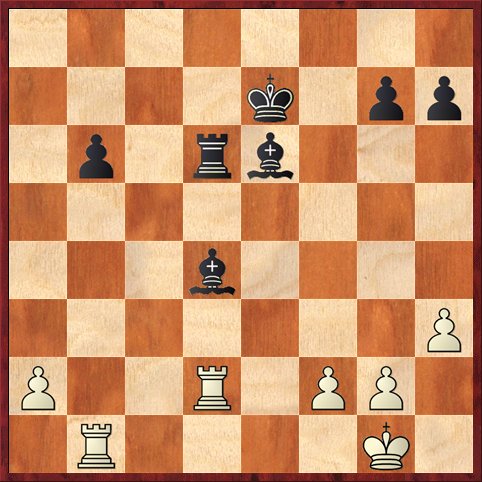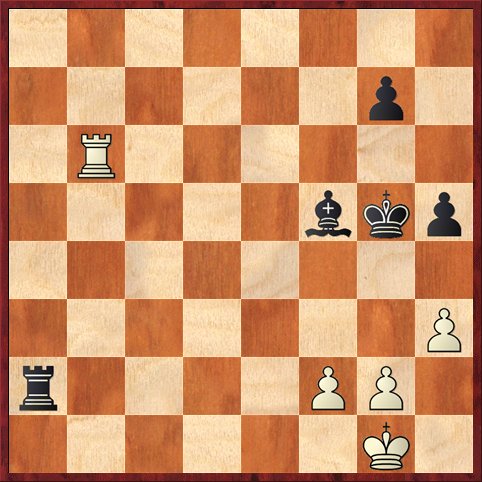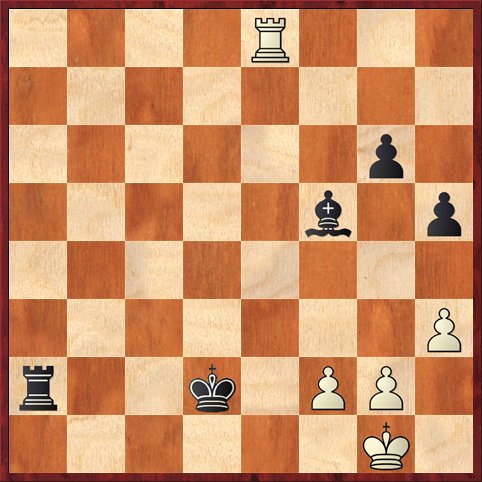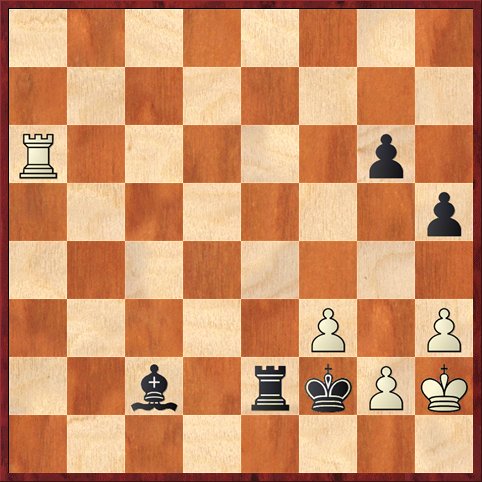On ABC’s Wide World of Sports, the late broadcaster Jim McKay used to talk about “the thrill of victory and the agony of defeat.” But in chess we have a third possibility, the agony of de-draw.
The first seven rounds of the Millionaire Open in Las Vegas are over, and tomorrow is “Millionaire Monday.” The Final Four, who will play off for the $100,000 first prize, are Wesley So (Phillippines), Yangyi Yu (China), Ray Robson (U.S.) and Jianchao Zhou (China).
At this point, after seven rounds of serious chess, each of these four is guaranteed to win at least $14,000. Tomorrow one of those four will win $86,000 more just for playing better 25-minute, 15-minute, 5-minute, or Armageddon chess than the others.
Pretty nice work if you can get it, right? But getting to the final four is not exactly a walk in the park. Just ask David Berczes and Daniel Naroditsky.
Berczes, from Hungary, could have been the Cinderella story of the tournament. Rated 36th coming in (at 2571), he was in a six-way tie for first going into the last round at 5-1. He was paired against Ray Robson, and absolutely crushed him as Black in a Ruy Lopez. He won two pawns, and according to commentator Lawrence Trent Berczes was “just one move away from winning.” But he didn’t find that move, and things got messy, and then eventually he blundered and lost. If Berczes had won, he would have been in the Final Four for sure. Instead he’s out, and faces two more games of chess tomorrow for a much smaller prize. (Fifth place is $8000.)
Another player who must have been almost as disappointed was Daniel Naroditsky. In round six, in one of the most fascinating games of the tournament, he reached this position as Black against the #2 seed, Xiangzhi Bu of China.
 FEN: 8/4k1pp/1p1rb3/8/3b4/7P/P2R1PP1/1R4K1 w – – 0 31
FEN: 8/4k1pp/1p1rb3/8/3b4/7P/P2R1PP1/1R4K1 w – – 0 31
Position after 30. … Ke7. White to play.
This is a kind of position that I think is underrepresented in chess books and magazines. We’re all accustomed to seeing brilliant winning sacrifices and combinations. But it’s not so common to see brilliant defensive moves. White’s next move is definitely in that category.
31. Rxd4!!
Perhaps this was partly played out of desperation; perhaps Bu knew that anything else was hopeless. Still, I think this move shows amazing judgement. Rather than get tortured in a position with a rook and pawn against two powerful bishops, Bu gives up the exchange in order to reach a piece-down endgame: rook and three pawns against rook, bishop and two pawns. But he realizes that the win will be extremely difficult for Black, because all the pawns are on one side and there are no obvious weaknesses.
The computer program Stockfish, which was providing real-time annotations, considered this move a huge blunder. Before this move, it thought that Black had a 2.17-pawn advantage. After the sacrifice, it rates Black’s position as 3.73 pawns better. (And the advantage soon got bigger — as high as 4.6 pawns.)
If you ever wanted an example of why you shouldn’t trust computer analysis, this is it. The position is in fact ferociously difficult for Black to win. I still can’t say for certain that he is winning, although I think it’s close. The “analysis” by Stockfish mostly consists of planless moves that make no obvious progress for Black.
Of course the online spectators could all see the computer’s evaluation and some may have thought that Naroditsky blew an easy win. Not so! Not so at all!
A few moves later Bu and Naroditsky got to the following position.
 FEN: 8/6p1/1R6/5bkp/8/7P/r4PP1/6K1 b – – 0 38
FEN: 8/6p1/1R6/5bkp/8/7P/r4PP1/6K1 b – – 0 38
Position after 38. Rb6. Black to move.
Here is where I think that Daniel started to go wrong (if anywhere). He played 38. … Ra1+ 39. Kh2 Rf1, which I believe was a mistake because it allowed White to defend his pawn easily with 40. Rb2. I think it was better to stay on the seventh rank, in part because this keeps White’s king tethered to the back rank (otherwise he loses the f-pawn).
I think there is no reason that Black can’t start mobilizing his king with 38. … Kf4. But we really shouldn’t just be thinking about individual moves, we should think about plans. What is Black’s plan to make progress?
The answer is not that hard. He should play … g6 at some point, to make the kingside pawns and bishop self-defending. And then he should march his king toward pay dirt — his opponent’s back rank.
Of course, a definitive analysis is hardly possible here, because there are so many ways White could set up his pawns. There’s f2-g3-h4, or f3-g2-h3 (the configuration that White chose in the game, which I think was extremely solid), or just leaving the pawns where they are. If I were White, I personally wouldn’t touch the pawns until I had to. As they say, you can never move a pawn backwards.
I think that the critical position would look something like this.
 FEN: 4R3/8/6p1/5b1p/8/7P/r2k1PP1/6K1 b – – 0 1
FEN: 4R3/8/6p1/5b1p/8/7P/r2k1PP1/6K1 b – – 0 1
Position after move ?? (analysis). Black to move.
Here, Black has tried to get his king to e1, where it would create a double attack on the f2-pawn. However, White doesn’t have to allow that, and he has defended by posting his rook on the e-file. So now Black has to come up with a backup plan.
I spent some time looking at 1. … Kd1, but I don’t think it works. The idea for White is to pass until Black plays … Re2. Then White will play Rd8+ (or Rd-whatever+). If Black then plays … Ke1, White plays Ra8 (or Ra-whatever). Now, surprise, Black can’t take on f2 because of Ra1+ followed by a skewer of Black’s king and rook. Or if Black plays … Rd2, then White can move his rook back to the e-file. I don’t see a way for Black to make progress.
Instead, in the diagrammed position, I think the time is finally ripe for Naroditsky’s move, 1. … Ra1+! After 2. Kh2 the idea is to play 2. … Re1, forcing an entrance with the king. After 3. Rd8+ Ke7 I believe White is now forced to move the f-pawn: 4. f3. (If 4. Kg3 I think 4. … Kf1! is a killer.) Then play might continue something like this: 4. … Kf2 5. Rd2+ Re2 6. Rd6 Bc2 7. Ra6 (diagram).
 FEN: 8/8/R5p1/7p/8/5P1P/2b1rkPK/8 b – – 0 7
FEN: 8/8/R5p1/7p/8/5P1P/2b1rkPK/8 b – – 0 7
Position after 7. Ra6. Black to move.
White’s last move was forced, so that he can answer 7. … Kf1 with 8. Ra1+. At this point I’m going to stop my analysis because I have long since passed into fantasy chess. (My usual rule is that anything more than 10 moves past the last actual position that occurred in the game is fantasy chess.) I would say that in this position Black has made tremendous progress, and is closer to a win than Naroditsky ever got. White has the same pawn formation, f3-g2-h3, that appeared in the game, but in the game Naroditsky’s king was way back on g5 and never got more active.
Nevertheless, I don’t know whether even this position is won, even though it looks like the best Black can hope for. White’s fortress on the kingside is still very tough to crack. The move I would recommend for Black is 7. … Re5, with two ideas. One idea is that in case of 8. Ra2, Black can defend the bishop with 8. … Rc5. Also, Black has the idea of (eventually) playing … Rg5 and provoking White into another pawn-weakening move.
Anyway, the lesson is that rook, bishop and pawns versus rook and more pawns is very, very tough to win if the pawns are all on one side. Naroditsky tried until move 145 (!) but the game was eventually drawn (probably by the 50-move rule).
Another lesson is that Chinese players are very hard to beat!
For Naroditsky this game was a turning point in the tournament. If he had won, he would have been in clear first place going into round seven, with 5½ points. At that point he could have clinched a place in the Final Four just by drawing in round seven. Instead, he was part of a six-way tie for first entering round seven. He did in fact draw in round seven, against #4 seed Yangyi Yu (yes, he played the Bu-Yu juggernaut in consecutive rounds). That was only enough to put Daniel into a tie with Yu, Zhou, and Azarov. The four of them played a round robin of 15-minute games, which Yu and Zhou thoroughly dominated. Thus Yu and Zhou go on to the final four, and Naroditsky (like Berczes) has to go back to the drawing board and try to win fifth place and a much smaller prize.
(It’s pretty funny to think of $8000 as a “small” prize! But when you’ve been dreaming of $100,000, I suppose it is. The broadcast showed Naroditsky burying his head in his hands in despair for at least a minute or two after he was eliminated from contention for the Final Four.)


